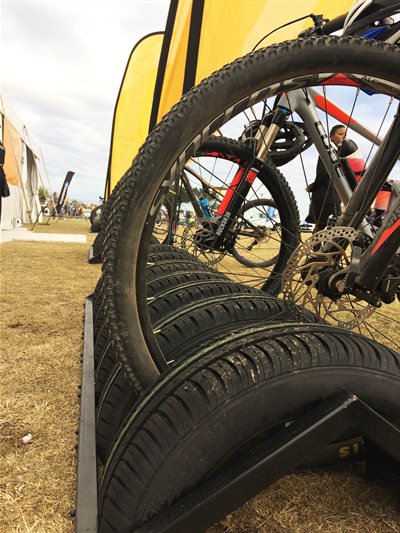
Top stories






LegalKenyan court postpones case seeking to halt Diageo's $2.3bn sale of EABL
Duncan Miriri and Emma Rumney 1 day
More news











The industry is currently focussing on four main areas of improvement: proper mutilation and disposal of waste tyres; reduction of materials used in tyres; sustainable sourcing of materials; and a reduction in carbon emissions.
“In South Africa, the Department of Environment, Forestry and Fisheries (DEFF) are the custodians of the Waste Tyre Management Plan (WTMP). According to the WTMP, the local tyre manufacturers pay a levy of R2,30 per kg to fund the proper treatment and disposal of waste tyres – helping curb pollution. This means that in order to limit the impact on the environment that tyres that have reached their useful life, waste tyres, tyre manufacturers pay a levy for DEFF to facilitate proper disposal of these waste tyres. The fundamentals of having this work properly is critical for the tyre industry as it ensures waste tyres are disposed of correctly to limit the impact on the environment and that they do not find a way back into the market,” explains Nduduzo Chala, managing executive of the SATMC. Waste tyres sold are illegal and are a safety risk for consumers.
Another way of reducing the number of waste tyres that end up in landfills is upcycling: Repurposing a product into something with an entirely different use or purpose. Examples of upcycled tyre products include dog beds, tyre ottomans and furniture, see-saws and bicycle stands. Tyres are durable and produce quality products that can be exposed to the elements.

Virtual tyre modelling technology allows Bridgestone to create a digital twin of a tyre at its development stage, reducing the volume of physical prototype tyres and raw materials needed. Bridgestone’s innovative Enliten Technology drastically reduces the raw materials used in the production of tyres, saving precious resources making sure that nothing goes to waste.
Goodyear’s overall corporate reasonability includes the sustainable sourcing of materials. It is exploring using a soybean oil tread compound in four of their tyre lines to create more sustainable rubber with added traction benefits. It also uses rice husk ash silicate, which helps deliver similar performance as traditional sand-based silica with less environmental impact and waste to landfills.
Sumitomo Rubber South Africa has installed a one MV solar system on its truck and bus radial production facility roof. The electricity that solar panels produce is completely emissions-free, protecting our environment. Solar energy also doesn’t pollute local water resources because solar photovoltaic cells don’t rely on water to generate power, resulting in cleaner drinking water.1
Continental Tyre South Africa won the Industrial Corporate Project of the Year award for innovative industrial energy management projects and outstanding contributions to the energy industry. Continental received this award for a heat recovery project that saved 4,5 million kWh of energy and over R1m in 2019. This continues to benefit operating efficiencies and reduce the plant’s environmental impact.
The Ecopia, an environmentally friendly and fuel-efficient new tyre presented by Bridgestone, combines a unique tyre compound with fine detailing. This tyre not only reduces fuel consumption but gives a quieter ride and improved road holding, all while reducing CO2 emissions and maintaining Bridgestone's high quality and safety performance.
“Taking small steps toward making a big change is what makes all the difference. We are proud of our members’ commitment to the environment, and as the SATMC, we continue to push forward for the finalisation of the Waste Tyre Management Plan by the DEFF, which needs to ensure better and effective means of looking after the environment,'' concludes Chala.
For more information on the SATMC and what they do, visit http://www.satmc.co.za/ or email az.oc.cmtas@ofni
Issued by cause marketing agency, DotGood.
1. https://www.environment.co.za/renewable-energy/how-solar-energy-helps-our-environment.html
The South African Tyre Manufacturers Conference (SATMC) is the official industry association of the local tyre manufacturers.
The SATMC’s main priority is to represent tyre manufacturers on trade, economic and environmental policies and tyre sector regulations.
The four tyre manufacturers are:
These manufacturers have factories in South Africa’s and supply new tyres to SA’s Original Equipment Manufacturers (OEM) and the replacement/aftermarket markets. These factories also export into Africa and other global markets, which helps South Africa’s economy and build our status as a leader in the automotive industry.